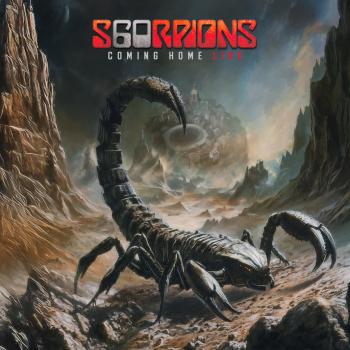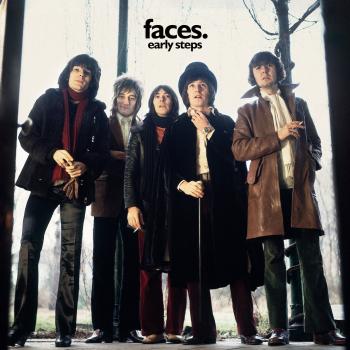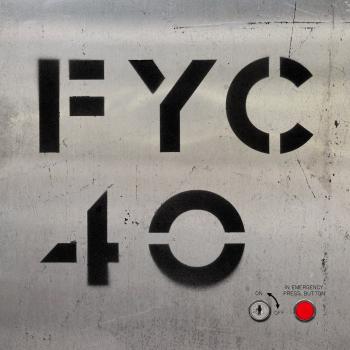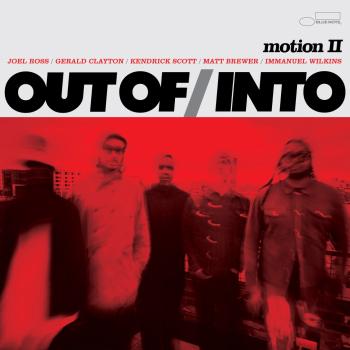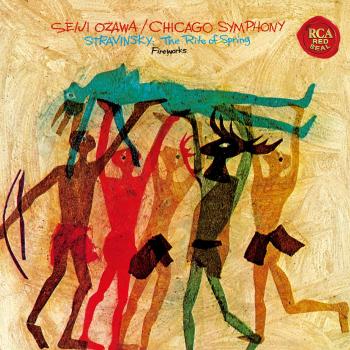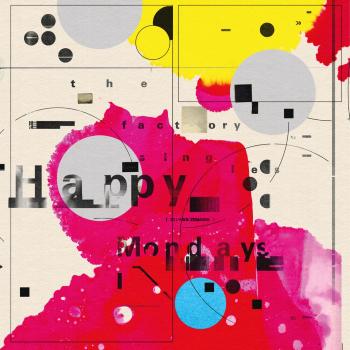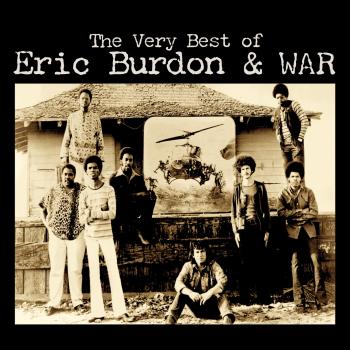
Kamakiriad Donald Fagen
Album Info
Album Veröffentlichung:
1993
HRA-Veröffentlichung:
08.06.2012
Label: Warner Music Group
Genre: Pop
Subgenre: Pop Rock
Interpret: Donald Fagen
Komponist: Donald Fagen
Das Album enthält Albumcover
Entschuldigen Sie bitte!
Sehr geehrter HIGHRESAUDIO Besucher,
leider kann das Album zurzeit aufgrund von Länder- und Lizenzbeschränkungen nicht gekauft werden oder uns liegt der offizielle Veröffentlichungstermin für Ihr Land noch nicht vor. Wir aktualisieren unsere Veröffentlichungstermine ein- bis zweimal die Woche. Bitte schauen Sie ab und zu mal wieder rein.
Wir empfehlen Ihnen das Album auf Ihre Merkliste zu setzen.
Wir bedanken uns für Ihr Verständnis und Ihre Geduld.
Ihr, HIGHRESAUDIO
- 1 Trans-Island Skyway 06:30
- 2 Countermoon 05:05
- 3 Springtime 05:06
- 4 Snowbound 07:08
- 5 Tomorrow's Girls 06:17
- 6 Florida Room 06:01
- 7 On The Dunes 08:07
- 8 Teahouse On The Tracks 06:10
Info zu Kamakiriad
Originally produced by Steely Dan's co-founding member, Walter Becker, Donald Fagen's Kamakiriad is a brilliantly executed futuristic retro concept album which spins a unique Sci-Fi outlook on the world. The eight-song cycle re-creates a retro-futuristic world in which Fagen's '50s nostalgia meets high-tech millennialism. If you loved the studio-intensive blues-rock, tantalizing, crisp white funk grooves that made Steely Dan, and Fagen's Nightfly solo album so compelling, Kamakiriad will keep your pulse racing.
Kamakiriad impressed music critics worldwide, and went on to be nominated for a Grammy Award in 1994 for Album of the Year. This was a fascinating concept album that took listeners on a journey into a brave new musical world; a few years in the future, near the millennium. In the opening track, Trans-Island Skyway, the narrator tells us he is about to embark on a journey in his new dream-car, a custom-tooled Kamakiri. It's built for the new century: steam-driven, with a self-contained vegetable garden and a radio link with the Tripster routing satellite. The next six songs describe his adventures along the way. In the closing track, Teahouse on the Tracks, the narrator lands in a dismal Flytown where he must decide whether to bail out or to rally and continue moving into the unknown.
Donald Fagen was one of the two masterminds behind Steely Dan, the seminal jazz-pop band of the '70s. Fagen's solo work has been a continuation of the band's work of the early '80s — carefully constructed and arranged, intricately detailed pop songs that are more substantial than their stylish surface may indicate. His 1982 solo debut, The Nightfly, was the best album he had made in years; it covered the same ground as the last two Steely Dan albums, yet surpassed it in terms of ambition and achievement.
After the success of The Nightfly, Fagen suffered a case of writer's block; for the rest of the decade he contributed music to the occasional film and briefly wrote a column for Premiere magazine in the mid-'80s. In the early '90s, he toured with the New York Rock & Soul Revue as he finished the material for his second album. With his former Steely Dan partner Walter Becker producing, 1993's Kamakiriad sounded like Aja recorded with '90s technology. It had some success on the adult contemporary charts, but it was overshadowed by the duo's decision to re-form Steely Dan and tour for the first time in nearly 20 years; the tour was a massive success. One more album - 2003's Everything Must Go - came out the reunion before Fagen decided to begin work on his third solo album. With death as its main theme, Morph the Cat appeared in March of 2006. Soon after the album's release, Fagen embarked on his first solo tour.
'Very Good - ...Donald Fagen is still in touch with aspects of his greatness....' (NME)
Musicians on the Kamakiriad album:
Donald Fagen (vocals, keyboards)
George Wadenius (guitar)
Lou Marini (alto saxophone, flute)
Cornelius Bumpus, Illinois Elohainu (tenor saxophone)
Lawrence Feldman, Dave Tofani (tenor saxophone, flute)
Ronnie Cuber, Roger Rosenberg (baritone saxophone)
Alan Rubin (trumpet, flugelhorn)
Jim Pugh, Birch Johnson (trombone)
Paul Griffin (Hammond B-3 organ)
Walter Becker (bass, guitar)
Leroy Clouden (drums, percussion)
Christopher Parker, Dennis McDermott (drums)
Bashiri Johnson (percussion)
Producer: Walter Becker
Recorded & mixed at River Sound New York, additional recording at Hyperbolic Sound, Hawaii; Clinton Recording and The Hit Factory, New York.
Mastered at Masterfonics, Nashville.
Nominated for a 1994 Grammy® Award for Album Of The Year.
#10 position The Billboard 200
1948 - 1965:
Donald is born in Passaic, NJ, on January 10th, 1948, to Elinor and Joseph (Jerry) Fagen, then a C.P.A. working for a large accounting firm in New York City. The boy is exposed to popular music by his mother, who, as a child and teen, had sung professionally in the Catskills under the name Ellen Ross. Each day, as she goes about her housework, she sings the works of Kern, Warren, Berlin, Arlen, Gershwin, Porter, and so on. When Dad springs for a TV set in '55, Donald, age 7, sees Chuck Berry on the Dick Clark show and starts spending his allowance on rhythm & blues singles. His collection soon includes 45s by Chuck, the Everly Brothers, vocal groups such as the Coasters and the Drifters, and the odd Spike Jones record.
The Fagens’ peregrinations around the state end in Kendall Park, a barely completed housing development on a highway halfway between groaning, industrial New Brunswick and the green avenues of Princeton. Donald's older cousins – Barbara, Mike, and Jack - introduce him to "modern jazz,” a hot item at the time. Donald immediately passes on his R&B collection to his little sister Susan, and becomes a ferocious jazz snob and all-around junior hipster.
He subscribes to down beat and stays up all night listening to jazz radio personalities broadcasting out of New York City like Symphony Sid, Mort Fega, and monologist Jean Shepherd; he secures a membership in the Science Fiction Book Club. Other reading includes Ferlinghetti, Ted Joans, plays by Brecht and Albee, and Paul Krassner's Realist. As a teen, he reads his mom’s copy of Vladimir Nabokov’s Lolita and becomes a serious fan.
He is soon bussing to "the city” to see live jazz at clubs like Slug's and the Village Vanguard, where Max Gordon puts him at the banquette by the drums and serves him sweet, flat bar Cokes. He attends concert performances by Duke Ellington, Stan Kenton, Maynard Ferguson, Charles Mingus, and others.
At 11, he begins to play standards and jazz tunes by ear on the new Acrosonic spinet. He struggles to understand the mysterious progressions and voicings as played on records by Bud Powell, Thelonious Monk, Red Garland, Wynton Kelly, and Bill Evans. There are several attempts at formal piano lessons, but Donald's progress is hampered by a hyperactive disorder or ADD, or whatever they're calling it now. Nevertheless, by the time he finishes high school, Don has forced two other students — a bassist and a drummer — to form a trio, and begins writing "crummy little jazz pieces."
1965 - 1980:
In the fall of ’65, Donald enters Bard College in Annandale-on-Hudson, NY, where he seesaws between majors in English literature and music. His professors include Robert Kelly, Anthony Hecht, and Baruch Hochman (literature), Heinrich Blucher (philosophy), and Jacob Druckman (musical composition). In his third year (the rich-hued mid-’60s having given way to the psychedelic late-’60s), he meets freshman guitarist Walter Becker, already a veteran of several blues bands. After discovering many common interests (jazz, Chicago blues, soul music, science fiction, writers of the so-called "black humor school), the two undergraduates begin collaborating on songs and playing in assorted pickup bands. They listen to Motown singles and Laura Nyro albums on the massive Ampex studio monitors that Walter has set up in his dorm room. They also get some studio experience when fellow student Terence (Boona) Boylan, having scored a record contract, hires them to play on sessions for his album Alias Boona.
In 1969, Donald and Walter, having thus far failed to form a satisfactory band, try to peddle their growing list of songs on Tin Pan Alley, which is to say the Brill Building and 1650 Broadway in midtown Manhattan. Here they hook up with a small production company, JATA, recently started by the members of Jay and the Americans, who are enjoying a brief career revival due to a hit remake of the Drifters’ This Magic Moment. Nothing much happens with their songs, but the Americans employ them as musicians (keyboard and bass) in their touring band and as player/arrangers in the recording studio. JATA pitchman Kenny Vance places one forgettable number on a Barbra Streisand album, but the action stops there.
In 1971, Broadway crony Gary Katz, now an A&R man for ABC-Dunhill Records in L.A., convinces president Jay Lasker to take the duo on as staff songwriters. They move out to the coast where they are given a tiny office containing a desk and a piano. While attempting to come up with pop material for the label's roster of artists, they scheme to assemble a band and continue to add songs to their other book of songs, which they laughingly call “the dynamite.” When Lasker agrees to a recording budget, Becker, Fagen, and Katz send for some game east coast players and rehearsals commence in a vacant room at ABC-Dunhill after hours. The original lineup (in addition to Donald and Walter on keyboard and bass) is: Jim Hodder, drums; Jeff "Skunk” Baxter, guitar; Denny Dias, guitar; and Dave Palmer, vocals.
In '73 and '74, the band, now named (at the last minute) Steely Dan (a cartoon-like sex appliance out of William Burroughs Naked Lunch) tours the U.S. and Britain and releases two albums, Can't Buy A Thrill and Countdown to Ecstasy. Always experimenting, Becker and Fagen expand the personnel to include, at various times, former Disneyland singers Porky and Bucky, singer/percussionist Royce Jones, singer/keyboardist Michael McDonald, and drummer Jeff Porcaro. Nevertheless, in the summer of '74, the band breaks up.
By the time Pretzel Logic is released, Donald has taken over the lead vocal spot and professional session players are being called in for recording dates. ABC-Dunhill staff engineer Roger Nichols begins to take a larger role in the recording process and the partners enlist the help of uber-manager Irving Azoff. During the last half of the ’70s, the duo release four more critically acclaimed albums: Katy Lied, The Royal Scam, Aja, and Gaucho — featuring a long list of world-class players including Bernard Purdie, Chuck Rainey, Joe Sample, Larry Carlton, Phil Woods, and Wayne Shorter. Both Aja and Gaucho are nominated for Grammy Awards for Album of the Year. Roger Nichols and Elliot Scheiner take home several engineering Grammys.
1980 - 1993:
The ’80s see Donald and Walter leading mostly separate lives, Donald in New York City and Walter in Hawaii. Donald's innovative 1981 release, The Nightfly, becomes an instant classic. One of the first major pop releases to use the new digital recording technology, it also earns a Grammy nomination for Album of the Year and wins France's Grand Prix du Disques. In 1984, Donald receives an honorary Doctorate of Arts from his alma mater, Bard College.
During the ’80s, Donald takes on various projects including composing music for films (Heavy Metal, The King of Comedy, Bright Lights Big City), for other artists (Diana Ross, Yellowjackets, Jennifer Warnes, Manhattan Transfer) and co-production (The Gospel at Colonus soundtrack), as well as writing the occasional column on film music for Premiere Magazine.
As the ’90s begin, Donald collaborates with producer and wife-to-be Libby Titus on a series of legendary “club-concerts” exploring the work of specific songwriters such as Bert Berns and Jerry Ragovoy. This culminates in several national tours and the recording The New York Rock and Soul Revue - Live at the Beacon Theater, which features Michael Macdonald, Phoebe Snow, Boz Scaggs, Charles Brown, the Brigati Brothers, and others. Walter, back in NYC to produce Donald's solo album, Kamakiriad, joins the revue for the '92 season.
1993 - 2004:
Kamakiriad, an account of a dangerous journey in the “sedan of tomorrow,” is released to widespread acclaim in '93. Meanwhile, encouraged by the response to their performances in the Rock and Soul Revue, Donald and Walter, now under the management of Craig Fruin, debut the All New Steely Dan Orchestra that summer. A career retrospective boxed-set, Citizen Steely Dan, is released for Christmas. Walter's solo album, 11 Tracks of Whack, with Donald co-producing, comes out the following year. 1995's Alive in America documents the ’93-’94 tours.
At the conclusion of the Art Crimes Tour in '96, Donald and Walter begin writing for a new Steely Dan CD, the first album of all new songs in 20 years. Two Against Nature is released in 2000, supported by a tour, a PBS television concert, and several other TV appearances. The album wins four Grammy awards, including Album of the Year. A few months later, Steely Dan is inducted into the Rock and Roll Hall of Fame. In addition, the two songwriters become the recipients of ASCAP's Founder's Award and honorary Doctorates from the Berklee College of Music.
2003 sees the release of Everything Must Go, yet another instant classic. On the 2003 tour, Donald and Walter may finally have achieved their "dream band”: on drums, Keith Carlock; bass, Tom Barney; guitar, Jon Herington; keyboard, Ted Baker; trumpet, Michael Leonhart; saxes, Cornelius Bumpus and Walt Weiskopf; trombone, Jim Pugh; backup vocals, Carolyn Leonhart, Cynthia Calhoun, and Cindy Mizelle.
In 2006, Donald releases the album Morph the Cat. The three solo albums, The Nightfly, Kamakiriad, and Morph the Cat were released as The Nightfly Trilogy the following year.
The Steely Dan band continues to tour through the summer of 2011. The current lineup may be the best ever: drums, Keith Carlock; bass, Freddie Washington; guitar, Jon Herington; piano & organ, Jim Beard; trumpet, Michael Leonhart; tenor and baritone saxes, Walt Weiskopf and Roger Rosenberg; trombone, Jim Pugh; SD singers, Carolyn Leonhart, Cindy Mizelle, and Catherine Russell.
Donald is also one of the three Dukes of September, the others being Michael McDonald and Boz Scaggs. A revival of the original New York Rock and Soul Revue, the Dukes of September Rhythm Revue is on a U.S. tour this summer and will be going on to Japan in October.
Dieses Album enthält kein Booklet

